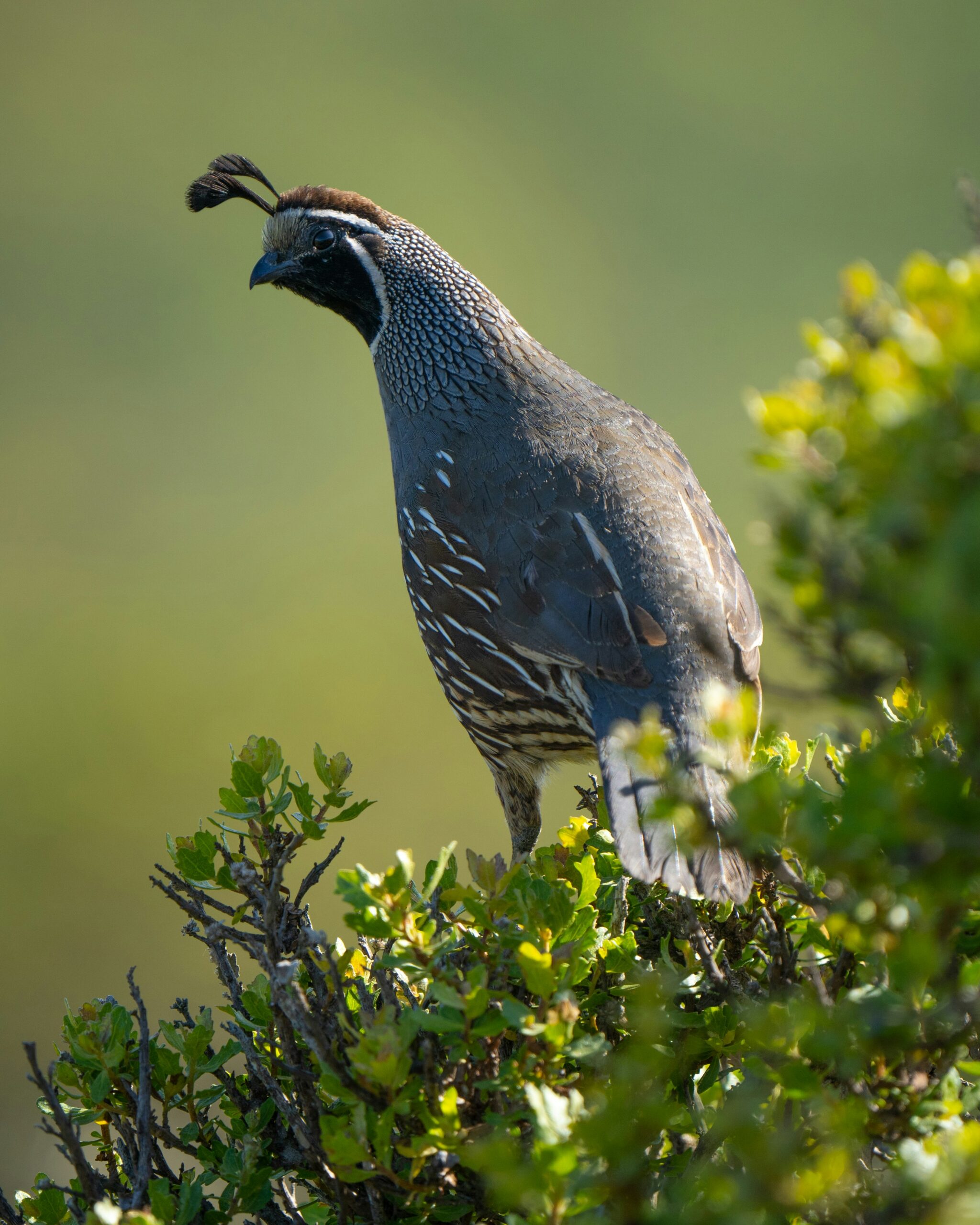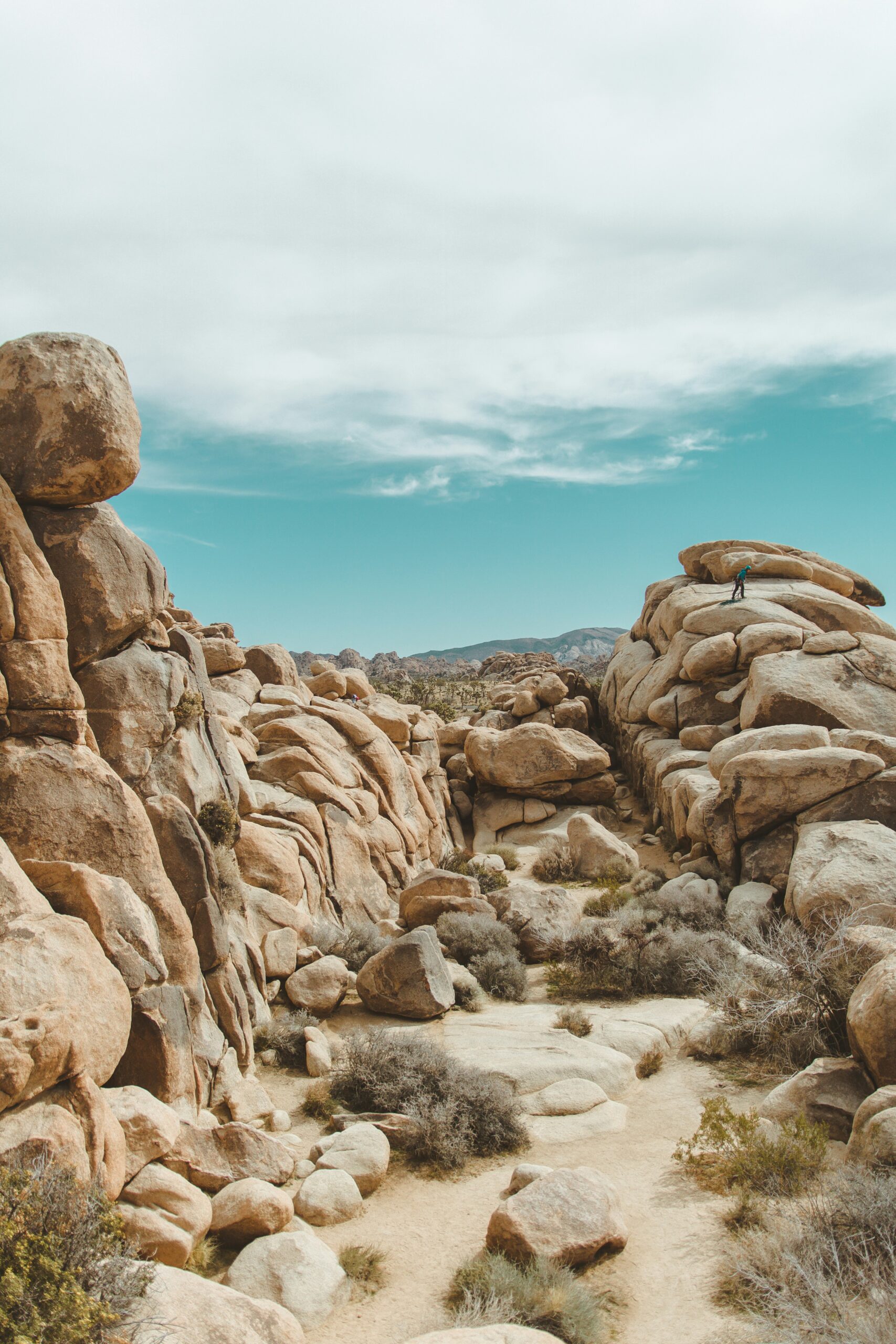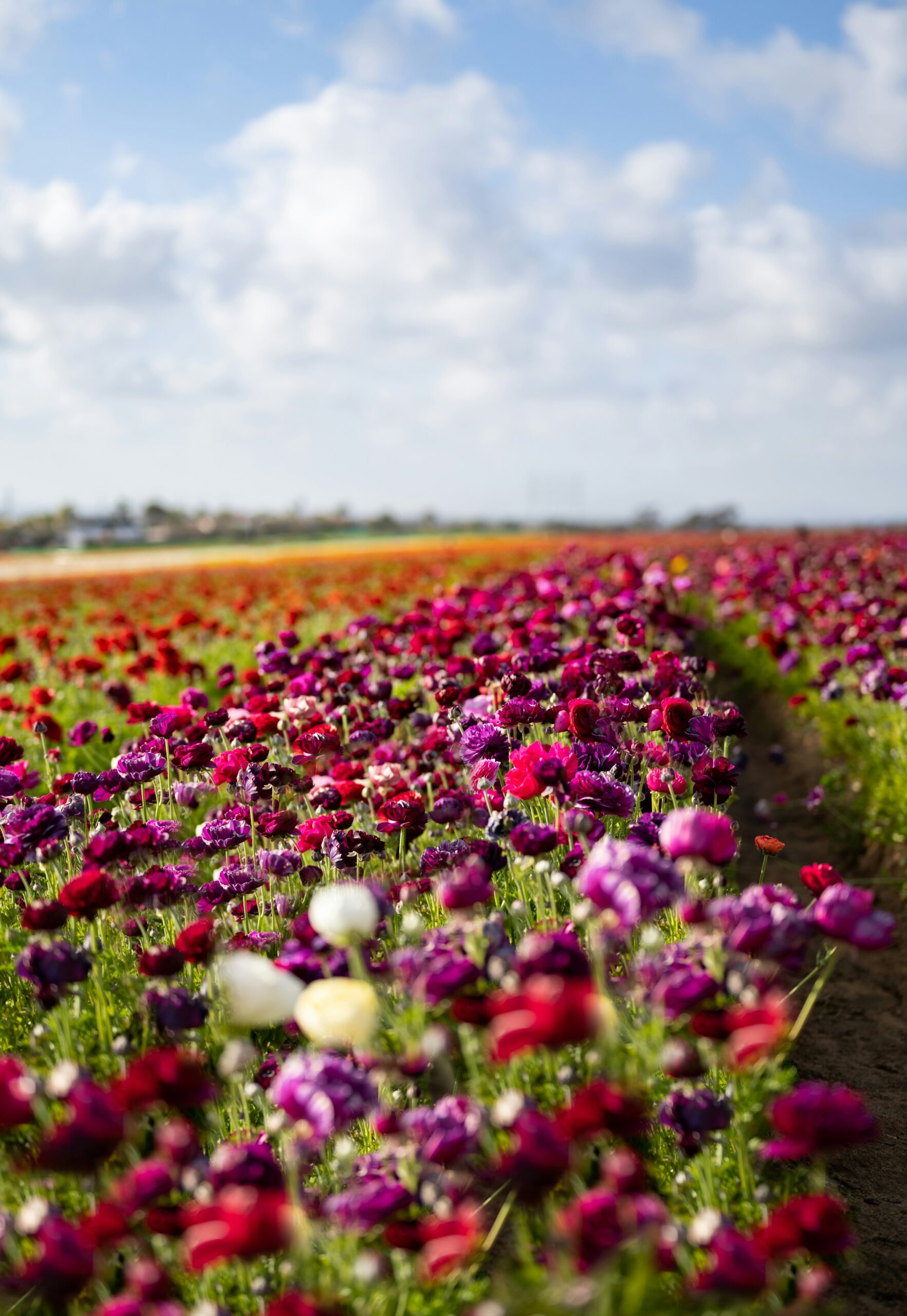Fun Facts of the California State Bird: Surprising Insights about the California Quail
The California Quail, scientifically known as Callipepla californica, is a charming and distinctive bird that holds a special place in the Golden State's heart. This plump, ground-dwelling bird was designated as the California State Bird in 1932. Its selection reflects the quail's widespread presence and cultural significance throughout the state.
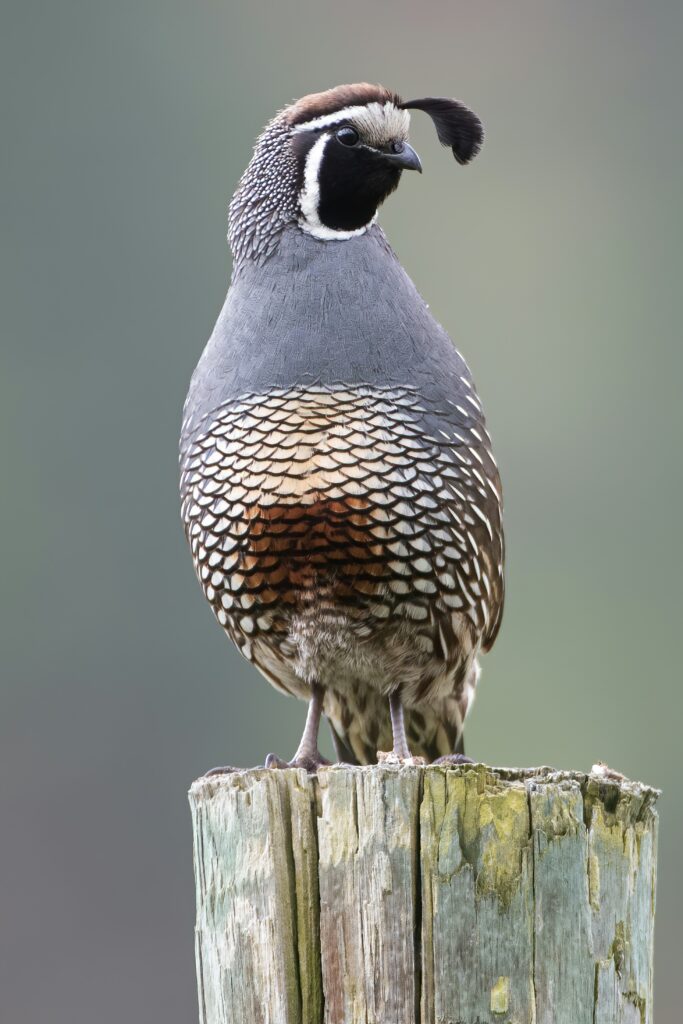
You'll find these charismatic birds scurrying through California's diverse landscapes, from coastal scrub to inland chaparral. The California Quail is easily recognizable by its unique features, including a curved black plume atop its head and a scaled pattern on its belly. These birds are known for their sociable nature, often seen in groups called coveys.
One of the most endearing traits of the California Quail is its distinctive call. You might hear their Chi-ca-go sound echoing through the underbrush, a charming vocalization that adds to their appeal. Their resourcefulness and adaptability have made them beloved symbols of California's natural beauty and resilience.
Fun Facts of the California State Bird: Surprising Insights about the California Quail
Physical Characteristics of the California Quail
The California Quail boasts a distinctive appearance with several unique features. You'll find its plump body and forward-curving plume instantly recognizable.
Color and Markings
The California Quail's plumage is a mix of gray, brown, and white. Its breast displays a rich gray color, while the underparts have intricate scaling. The bird's face has striking white stripes that contrast beautifully with its dark coloration.
You'll notice a black plume adorning the quail's forehead, curving forward in a teardrop shape. This plume is one of the bird's most distinctive features.
The quail's back and wings are mottled brown, providing excellent camouflage in its natural habitat. Its belly often shows a scaly pattern of white, gray, and chestnut feathers.
Sexual Dimorphism
You can easily distinguish male and female California Quails. Males typically have more vibrant colors and patterns compared to females.
The male's face is adorned with a bold black mask and white stripe. His throat displays a distinct black patch surrounded by white.
Female quails have a more subdued coloration. Their faces lack the bold black mask, instead showing a lighter brown color. The female's plume is usually shorter and less curved than the male's.
Distinctive Features
The California Quail's most iconic feature is its plume. This comma-shaped crest consists of six overlapping feathers, giving the bird a unique silhouette.
You'll find the quail's body shape quite round, often described as “soccer ball-like.” This plump appearance adds to its charm.
The bird's legs are relatively short but strong, adapted for quick bursts of running. Its beak is short and curved, perfect for its omnivorous diet.
Adult California Quails typically measure 24-27 cm in length and weigh between 140-230 grams. Their compact size allows them to navigate through brush and undergrowth with ease.
Habitat and Distribution
The California Quail thrives in diverse environments across the western United States. You'll find these charismatic birds in a variety of habitats, from coastal regions to inland areas.
Geographical Range
California Quails are native to the West Coast of North America. Their range extends from southern Oregon through California and into Baja California. You can spot them in coastal areas, valleys, and foothills throughout this region.
These birds have also been successfully introduced to other parts of western North America, including Washington, Idaho, and Nevada. Some populations have even established themselves in Hawaii and New Zealand.
Preferred Environments
You'll typically encounter California Quails in open woodland areas and chaparral. They favor habitats with a mix of cover and open spaces for foraging.
These adaptable birds thrive in:
- Brushy areas
- Grasslands with scattered trees
- Oak woodlands
- Suburban parks and gardens
California Quails prefer environments with access to water and dense vegetation for protection. You might see them in city parks, golf courses, and agricultural areas where they've adapted to human-modified landscapes.
In urban and suburban settings, these resourceful birds make use of shrubs, hedges, and low trees for shelter and nesting. Their ability to thrive in diverse habitats has contributed to their success as California's state bird.
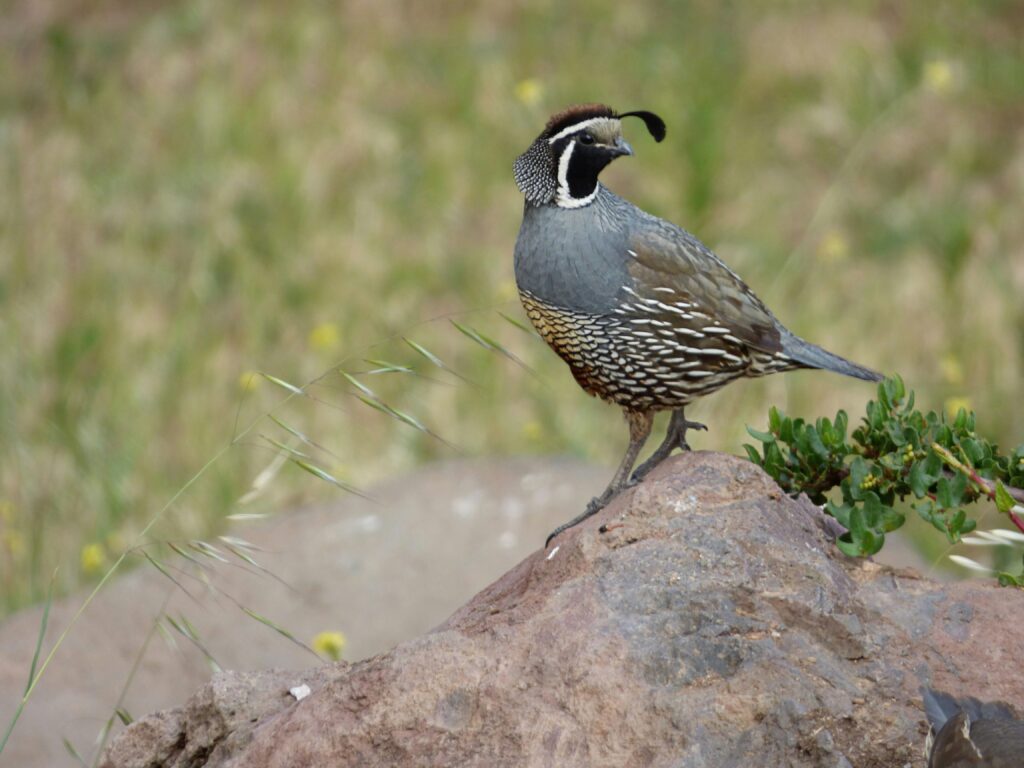
Diet and Foraging Behavior
The California Quail has a diverse diet and employs unique foraging techniques to find food. You'll learn about the natural food sources these birds rely on and their efficient methods for locating and consuming various items.
Natural Food Sources
California Quails have a varied diet that changes with the seasons. In spring and summer, you'll find them eating seeds, berries, and insects. Seeds make up a significant portion of their diet year-round, including those from grasses, legumes, and annual plants.
Berries and fruits become more important in late summer and fall. These may include wild grapes, elderberries, and poison oak berries.
Insects are crucial for growing chicks and molting adults. Caterpillars and beetles are particularly favored. The quails also consume small snails and leaves from various plants.
During winter, acorns and pine nuts become valuable food sources when other items are scarce.
Foraging Technique
California Quails are ground foragers, spending much of their time scratching and pecking at the soil. You'll often see them moving in groups, called coveys, while searching for food.
Their foraging behavior is methodical. They use their beaks to scratch the ground, uncovering hidden seeds and insects. Quails have strong gizzards that help them grind tough seeds.
In agricultural areas, you might spot them foraging in fields after harvest, picking up leftover grains. They're also known to visit backyard bird feeders, especially those offering cracked corn or millet.
During hot weather, quails forage in the early morning and late afternoon, seeking shade during midday. In winter, they may spend most of the day looking for food.
Social Structure and Behavior
California quails are highly social birds with complex social structures and behaviors. Their communal lifestyle revolves around tight-knit family groups that engage in cooperative activities year-round.
Covey Formation
California quails, or Callipepla californica, form small groups called coveys. These coveys typically consist of 10-20 birds but can grow up to 100 members in some cases. Coveys include adult males, females, and their offspring.
You'll find that coveys stick together throughout the year, providing protection and social bonds for the group. During breeding season, pairs may break off to nest, but they often rejoin the covey once chicks have hatched.
Covey members work together to forage for food, watch for predators, and care for young. This cooperative behavior increases survival rates and allows quails to thrive in various habitats.
Communication Patterns
Quails are vocal creatures with a diverse range of calls. You'll hear them communicating frequently within their coveys. Their most recognizable call is the “chi-ca-go” sound, which males use to gather the group.
Other vocalizations include:
- Alarm calls to warn of danger
- Assembly calls to bring the covey together
- Contact calls to maintain group cohesion
- Mating calls during breeding season
Body language also plays a crucial role in quail communication. Head bobbing, tail flicking, and wing fluttering convey various messages between individuals. These visual cues complement their vocal repertoire, ensuring effective communication within the covey.
Mating Rituals
During breeding season, California quails engage in elaborate courtship behaviors. Males perform displays to attract females, often involving puffing out their chest feathers and making enticing calls.
Pair bonding typically occurs in late winter or early spring. Once paired, the male and female work together to:
- Select a nesting site
- Build the nest
- Incubate eggs
- Raise chicks
Interestingly, multiple broods may mix after hatching, with several adults caring for the young collectively. This communal parenting strategy increases chick survival rates and reinforces the strong social bonds within the covey.
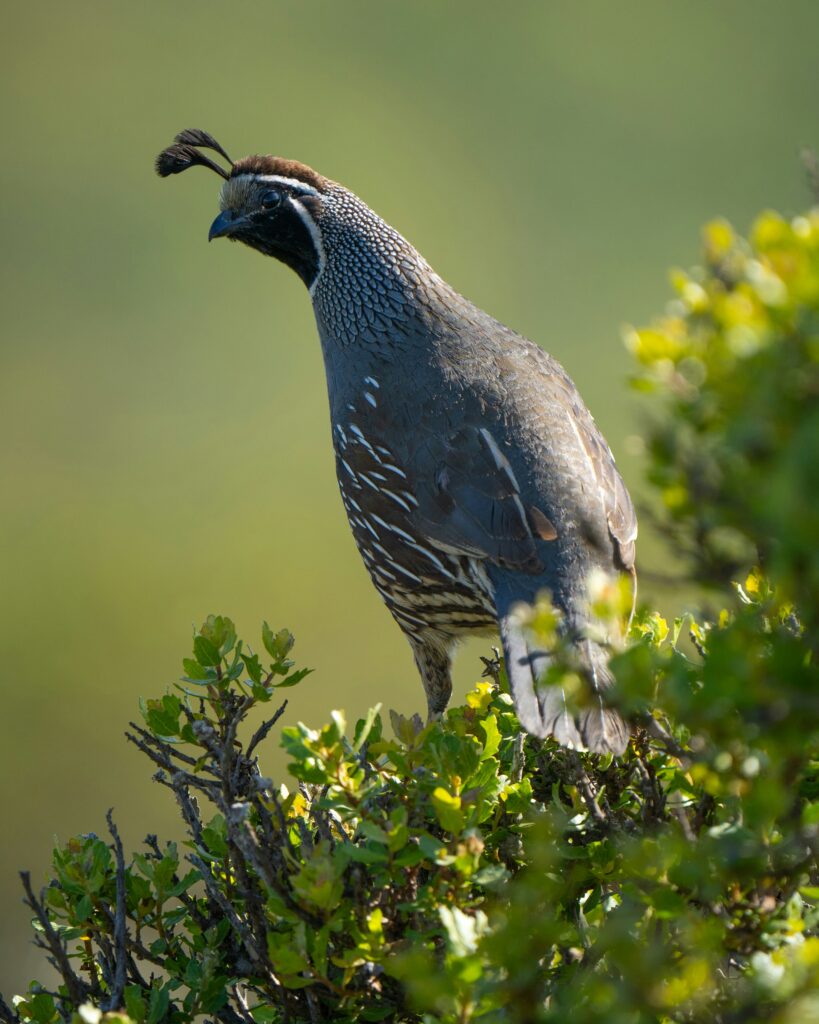
Reproduction and Nesting Habits
California quails have unique nesting behaviors and reproductive patterns. Their breeding season and egg-laying habits are fascinating aspects of their life cycle.
Nesting Sites
California quails prefer to build their nests on the ground in well-concealed locations. You'll often find their nests beneath shrubs or other protective cover. These birds are resourceful and adaptable when it comes to choosing nesting spots.
In urban areas, they may nest in gardens or parks with suitable vegetation. Rural quails typically select sites in grasslands, woodlands, or agricultural fields. The female quail creates a shallow scrape in the soil and lines it with vegetation to form the nest.
Egg Laying and Incubation
The breeding season for California quails typically begins in May. During this time, female quails lay approximately 12 eggs per clutch. However, clutch sizes can vary significantly, with some nests containing up to 28 eggs.
Interestingly, not all eggs in a nest necessarily come from the same female. Quails sometimes engage in “egg dumping,” where they lay eggs in another quail's nest.
The incubation period lasts 22-23 days. During this time, the female quail takes on the primary responsibility of incubating the eggs. The male quail plays a protective role, guarding the nesting territory while the female sits on the eggs.
Once the chicks hatch, both parents participate in caring for and protecting their young.
Survival Strategies and Predation
California Quails have developed various tactics to evade danger and survive in their habitat. These birds face threats from multiple predators but employ clever defense mechanisms to protect themselves and their offspring.
Flight and Escape Mechanisms
Despite being a ground-dwelling bird, the California Quail can take flight when necessary. You'll notice they prefer to run from danger, using their strong legs to quickly scurry away.
When threatened, quails often seek cover in dense vegetation. Their mottled plumage provides excellent camouflage, helping them blend into their surroundings.
California Quails have a unique escape strategy: they burst into flight suddenly and noisily. This startling takeoff can confuse predators, giving the quails precious seconds to reach safety.
Natural Predators
California Quails face threats from various predators in their environment. Domestic cats pose a significant risk, especially in urban and suburban areas where quails might venture.
Ground predators like snakes and squirrels target quail eggs and chicks. Adult quails must remain vigilant to protect their nests from these threats.
Aerial predators, including hawks and owls, also hunt California Quails. To counter this, quails often form tight-knit groups called coveys. This strategy allows for more eyes to watch for danger and increases the chances of spotting a threat before it's too late.
Conservation Status and Efforts
The California quail maintains a stable population but faces some localized threats. Conservation initiatives aim to protect its habitats and ensure its continued presence across the state.
Current Conservation Status
The California quail is not endangered and is currently listed as “Least Concern” on the conservation status scale. This means the species is not at immediate risk of extinction. Its adaptability to various habitats, including suburban areas, has helped maintain stable population numbers.
You might spot these birds in diverse environments, from coastal regions to mountain canyons. Their ability to thrive in different landscapes has contributed to their conservation success.
Protection and Preservation Initiatives
Several organizations work to protect the California quail and its habitats. The Audubon Society plays a crucial role in these efforts. They conduct regular bird counts and habitat assessments to monitor quail populations.
Conservation programs focus on preserving the quail's natural habitats. These include:
- Protecting grasslands and chaparral
- Maintaining oak woodlands
- Promoting native plant species
You can support these efforts by:
- Creating quail-friendly gardens with native plants
- Avoiding pesticide use in your yard
- Participating in local bird counts
By working together, you and conservation groups can ensure the California quail remains a vibrant part of the state's ecosystem for years to come.
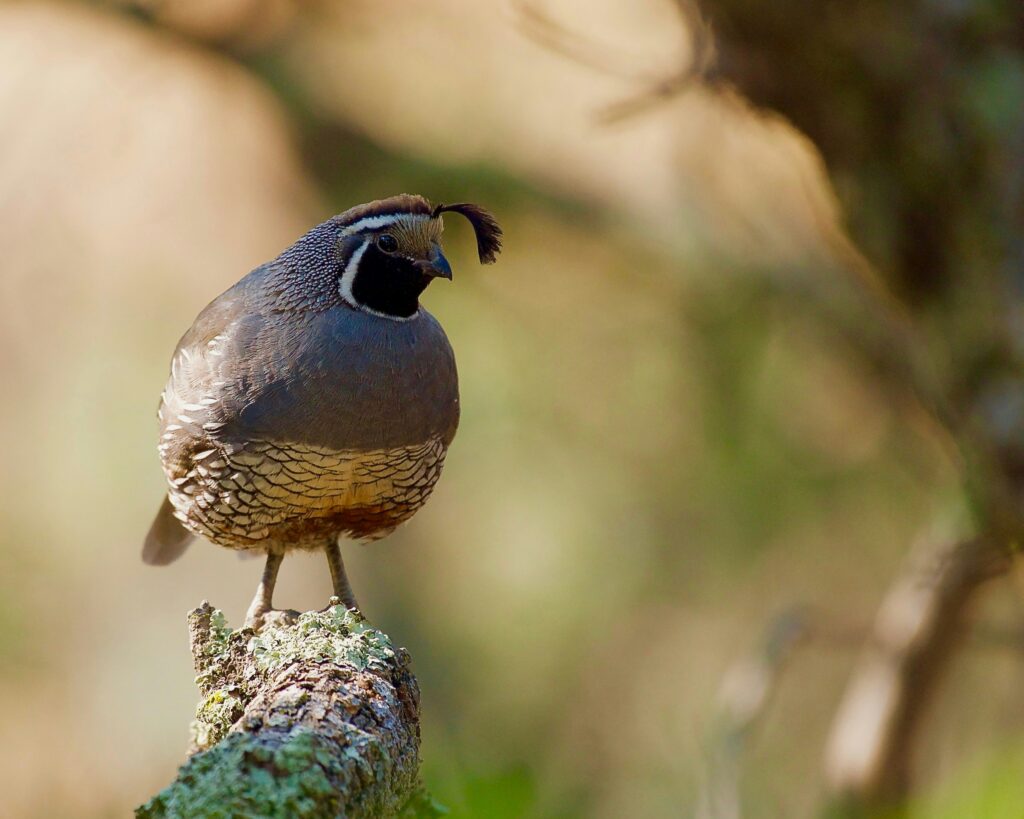
Cultural and Symbolic Importance
The California Quail holds deep significance in the state's cultural identity and artistic expressions. Its recognition extends far beyond its ecological role, embodying California's spirit in various forms.
State Symbolism
The California Quail became the official state bird in 1931, representing California's natural heritage. You'll find this plump, ground-dwelling bird featured on numerous state emblems and official documents. Its selection highlights the bird's prevalence throughout the Golden State and its importance to California's ecosystems.
The quail's distinctive topknot and plumage make it easily recognizable, contributing to its popularity as a state symbol. When you see a California Quail, you're witnessing a living embodiment of the state's commitment to preserving its unique wildlife.
Representation in Art and Literature
You'll encounter the California Quail in various forms of artistic expression across the state. Artists frequently depict this charming bird in paintings, sculptures, and public murals, capturing its elegant form and vibrant colors.
In literature, the quail often symbolizes California's natural beauty and resilience. You might find it mentioned in poems celebrating the state's landscapes or featured in children's books that teach young readers about local wildlife. The bird's presence in art and writing helps reinforce its cultural significance and connects Californians to their natural surroundings.
Scientific Classification and Study
The California quail's scientific classification and research provide fascinating insights into its biology and behavior. Rigorous studies have expanded our understanding of this iconic bird.
Taxonomy
Callipepla californica belongs to the Odontophoridae family, commonly known as New World quails. This family includes several ground-dwelling bird species found across the Americas.
The genus Callipepla contains four species of crested quails native to the southwestern United States and Mexico. C. californica is further divided into several subspecies, reflecting regional variations.
Taxonomists classify the California quail in the order Galliformes, which includes chickens, turkeys, and pheasants. This classification highlights its relationship to other game birds.
Research and Observational Studies
Scientists conduct extensive research on California quails to understand their ecology, behavior, and conservation needs. Field studies involve observing quail populations in their natural habitats, tracking their movements, and analyzing their diet.
Researchers use advanced techniques like GPS tracking and genetic analysis to study quail populations. These methods help in assessing population health, migration patterns, and genetic diversity.
Conservation biologists focus on the quail's role in California's ecosystems. They examine how urban development and climate change affect quail habitats and populations.
Behavioral studies reveal fascinating aspects of quail social structure. You'll find that these birds form tight-knit family groups called coveys, exhibiting complex social behaviors.
Human Impact and Interaction
The California Quail's relationship with humans is complex, involving both challenges and opportunities. Urban development affects their habitats, while birdwatching fosters appreciation for these charismatic birds.
Urban Encroachment on Habitats
As cities expand, California Quail habitats face pressure. You'll notice these birds adapting to urban and suburban areas, often seen in parks and gardens. Their resilience is remarkable, but they still need native vegetation for food and shelter.
Human activities fragment quail territories, making it harder for coveys to find suitable nesting spots. You might observe smaller group sizes in developed areas compared to rural settings.
To help, you can plant native shrubs and grasses in your yard. These provide cover and food sources, supporting quail populations in urban environments.
Birdwatching and Human Engagement
California Quails captivate birdwatchers with their distinctive calls and behavior. You can easily spot them in open areas, often running in groups rather than flying.
Their approachable nature makes them ideal for introducing new enthusiasts to birdwatching. You might encounter guided tours focusing on quail observation in state parks and nature reserves.
Community science projects allow you to contribute to quail conservation. By reporting sightings, you help researchers track population trends and distribution changes.
Remember to maintain a respectful distance when observing quails. Your responsible engagement ensures these beloved birds continue to thrive in California's diverse landscapes.

